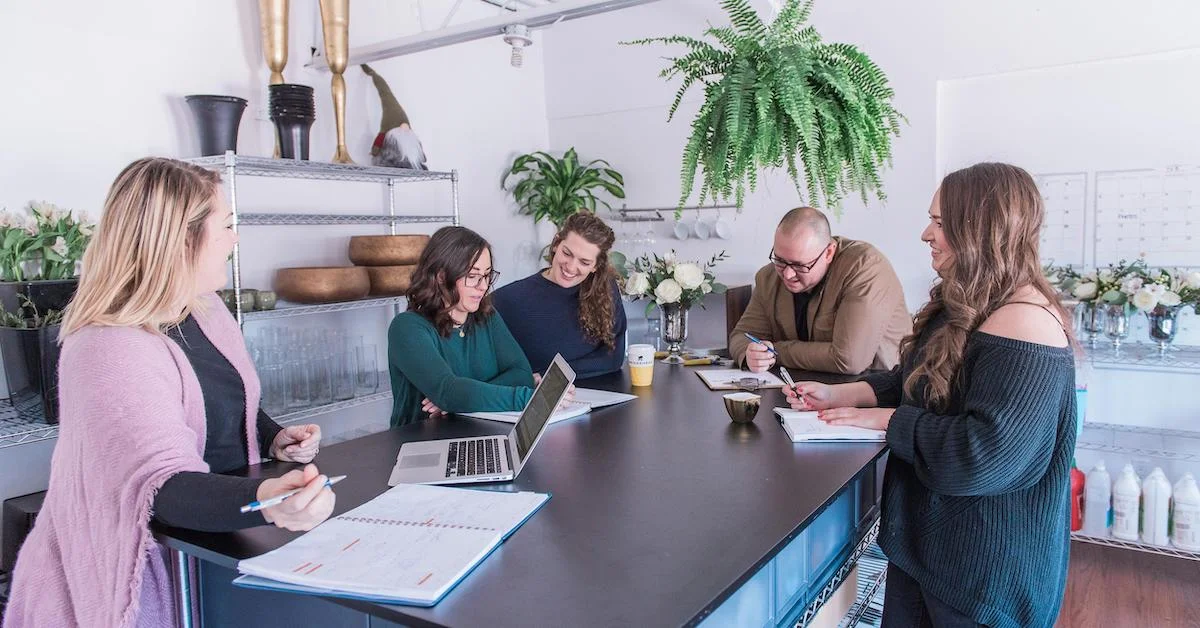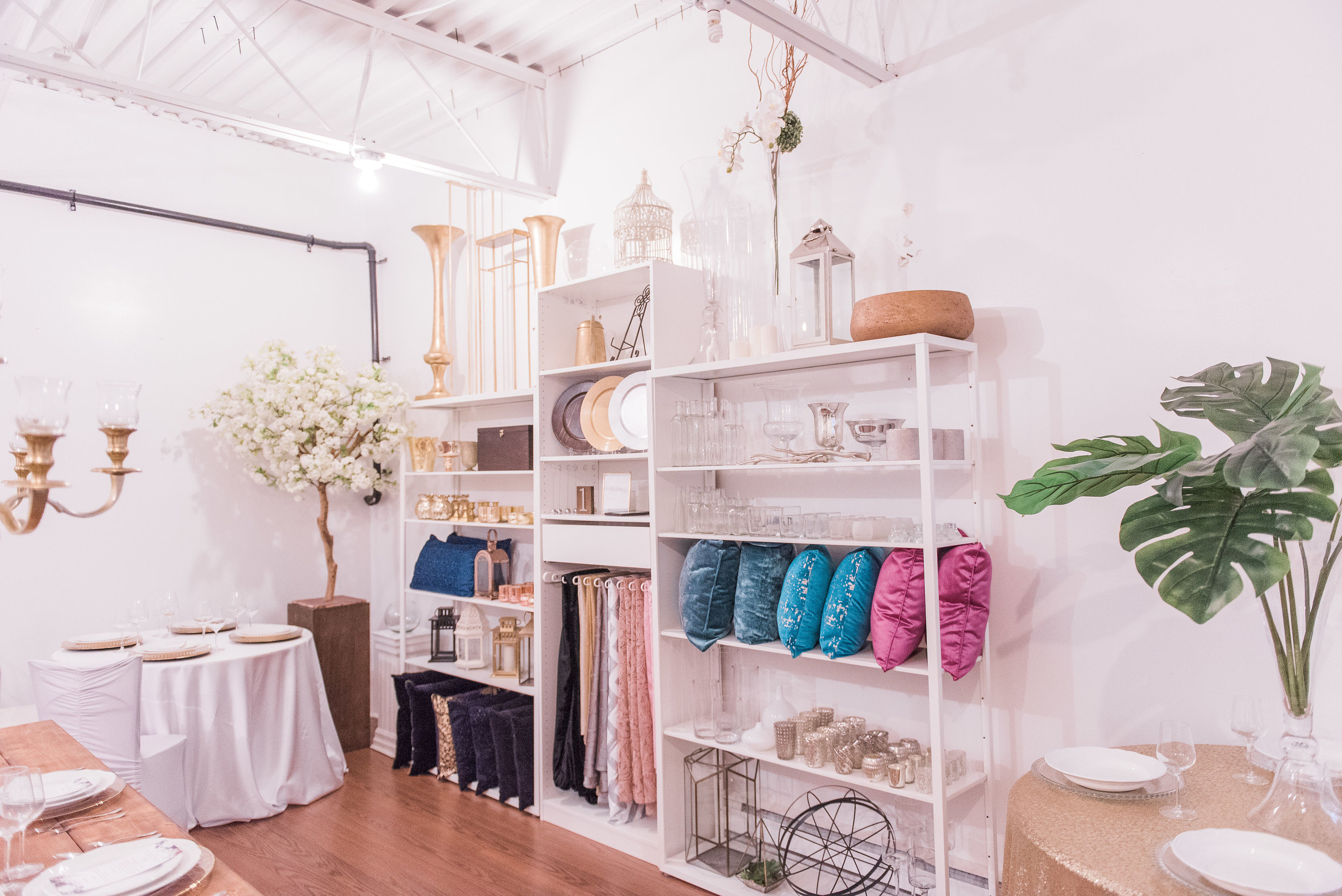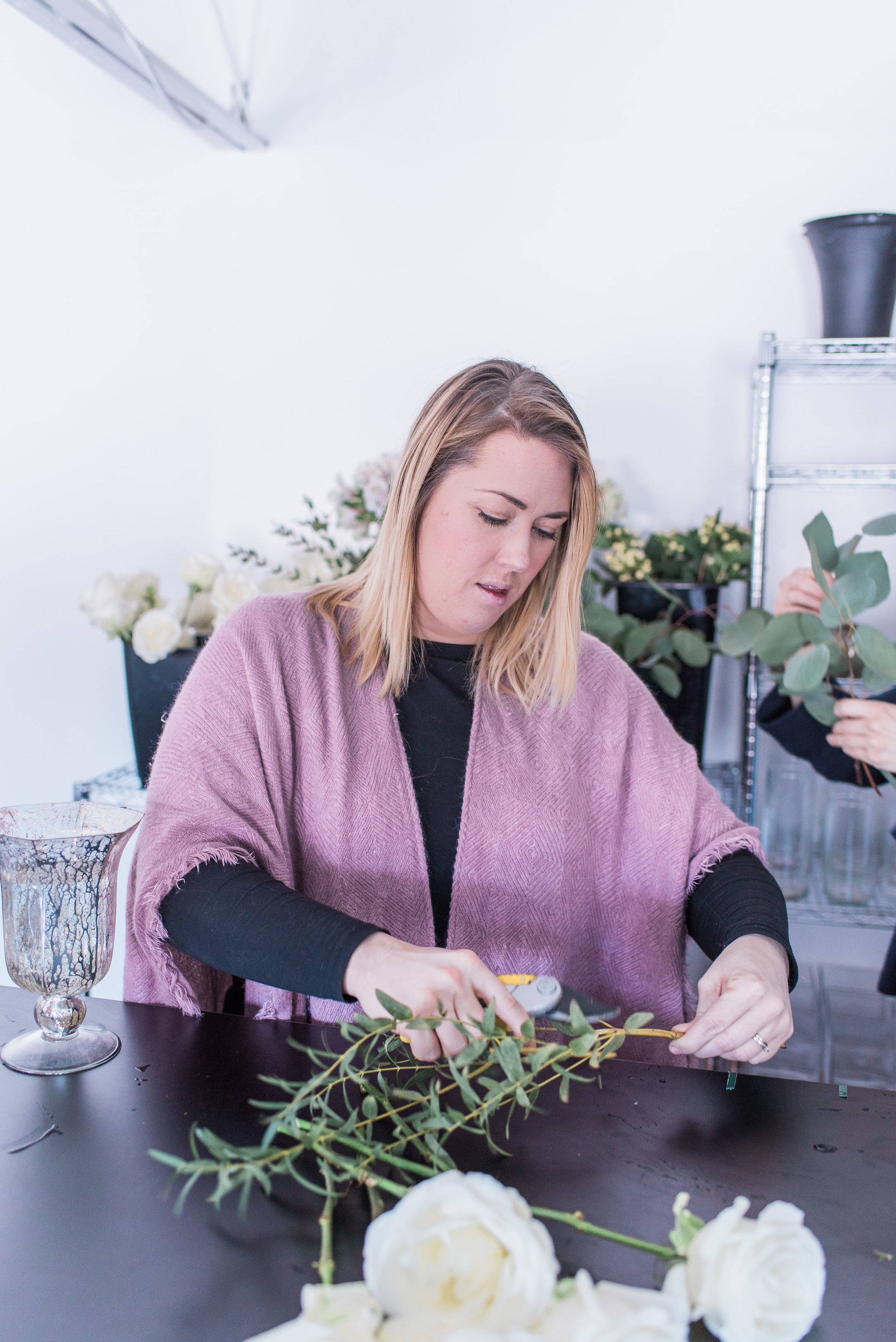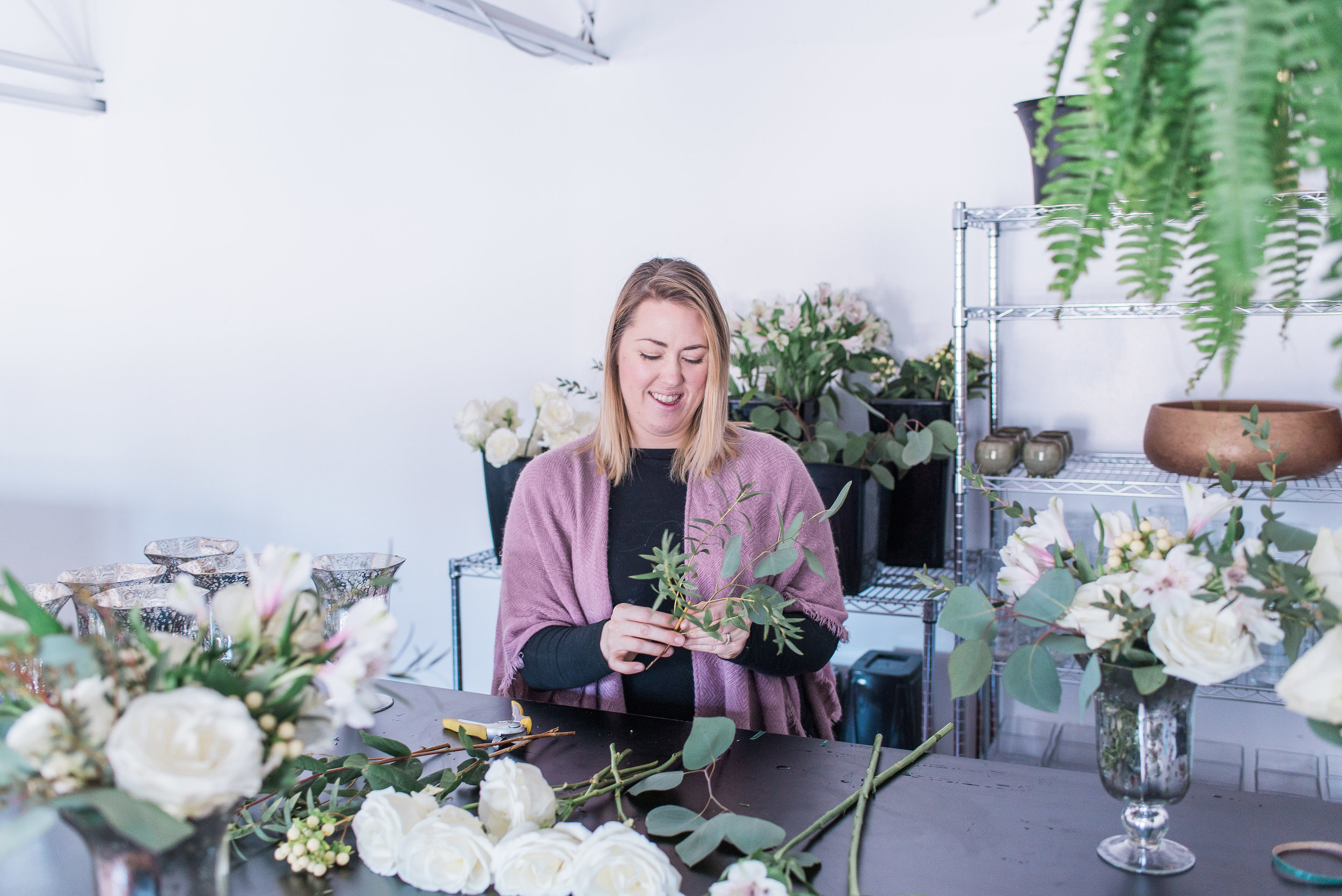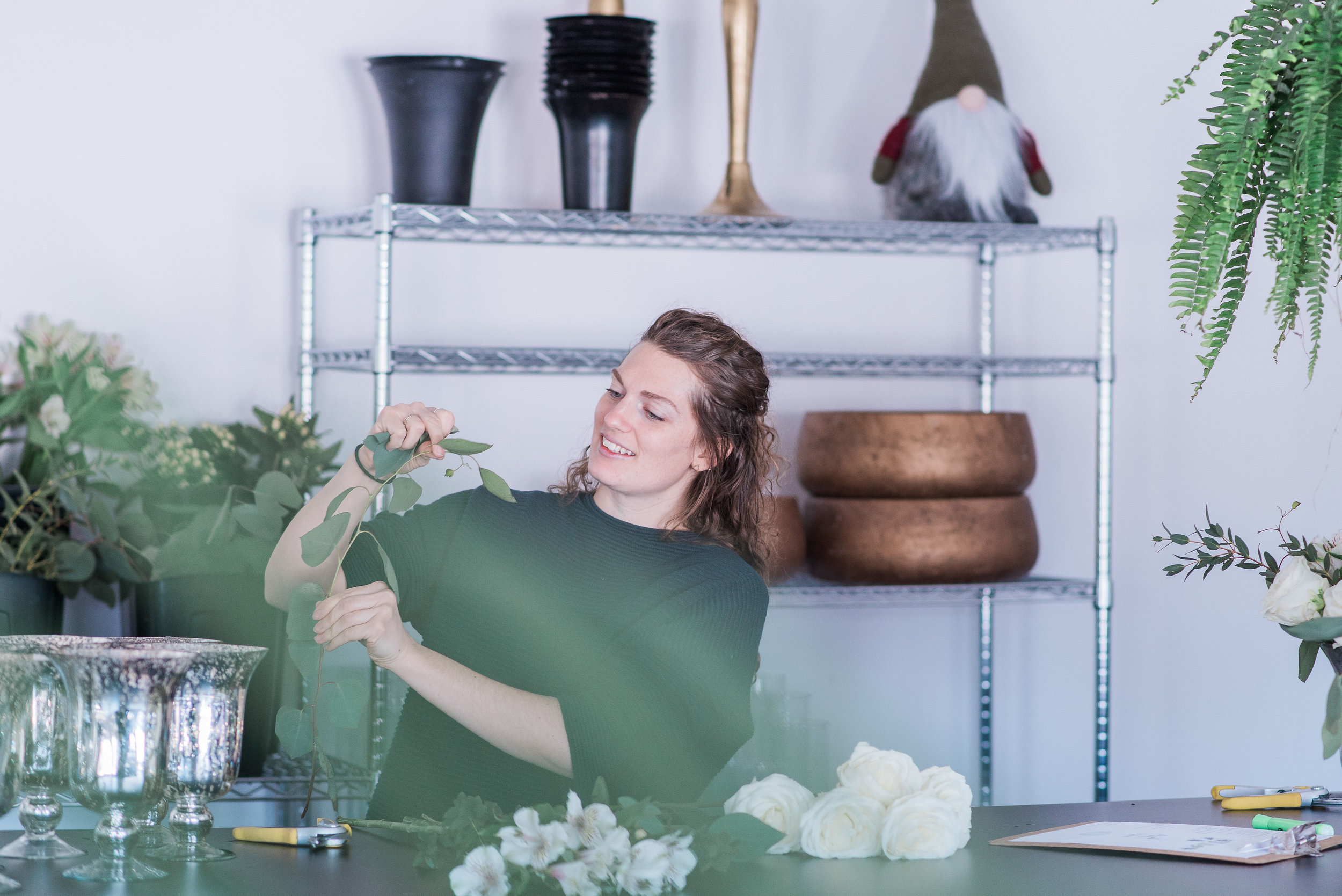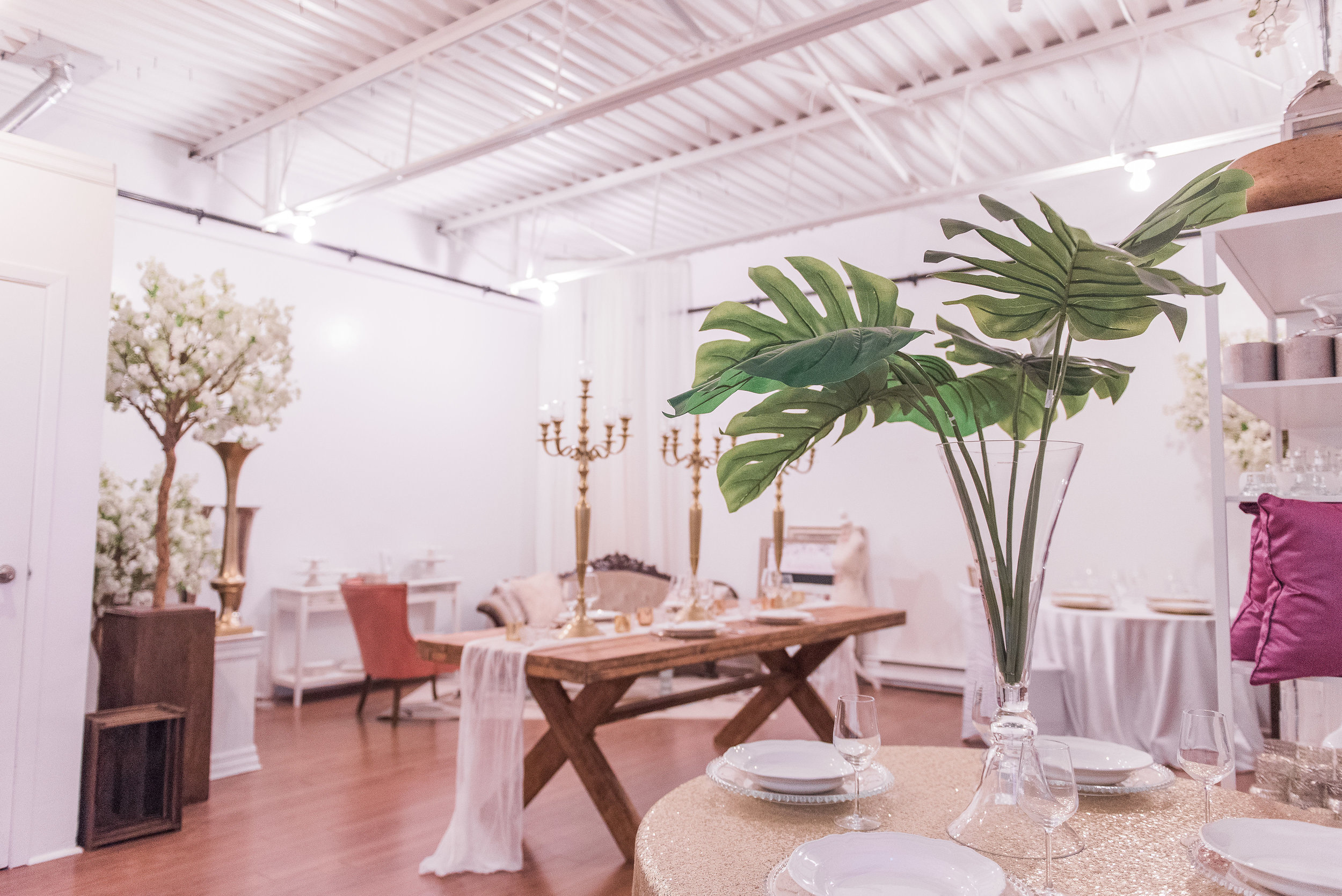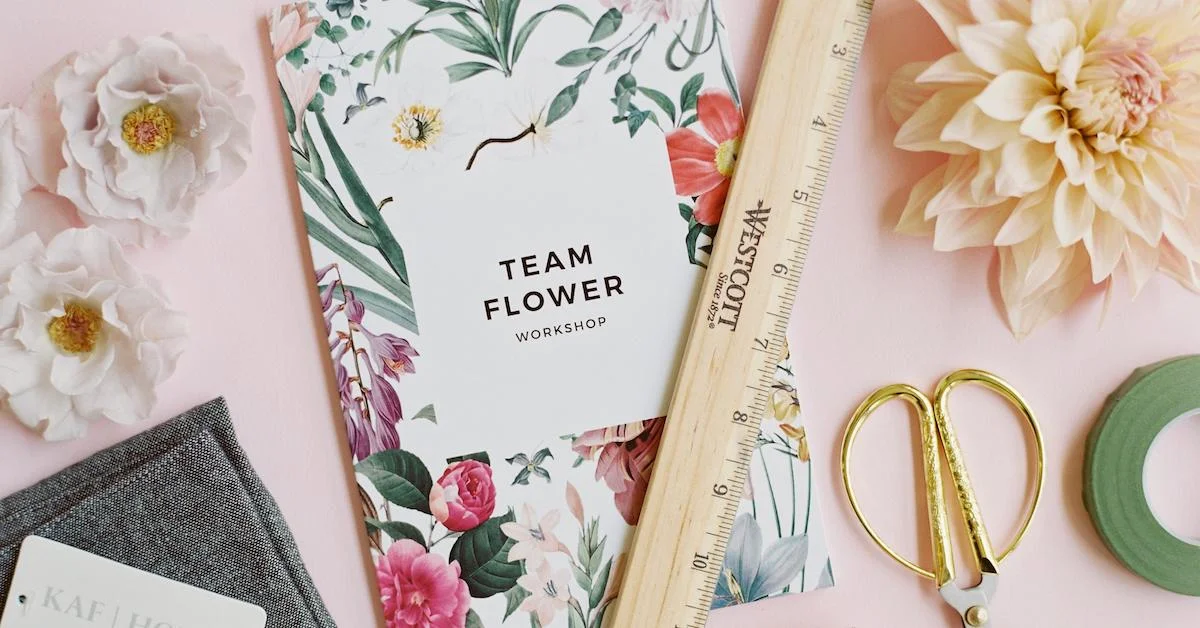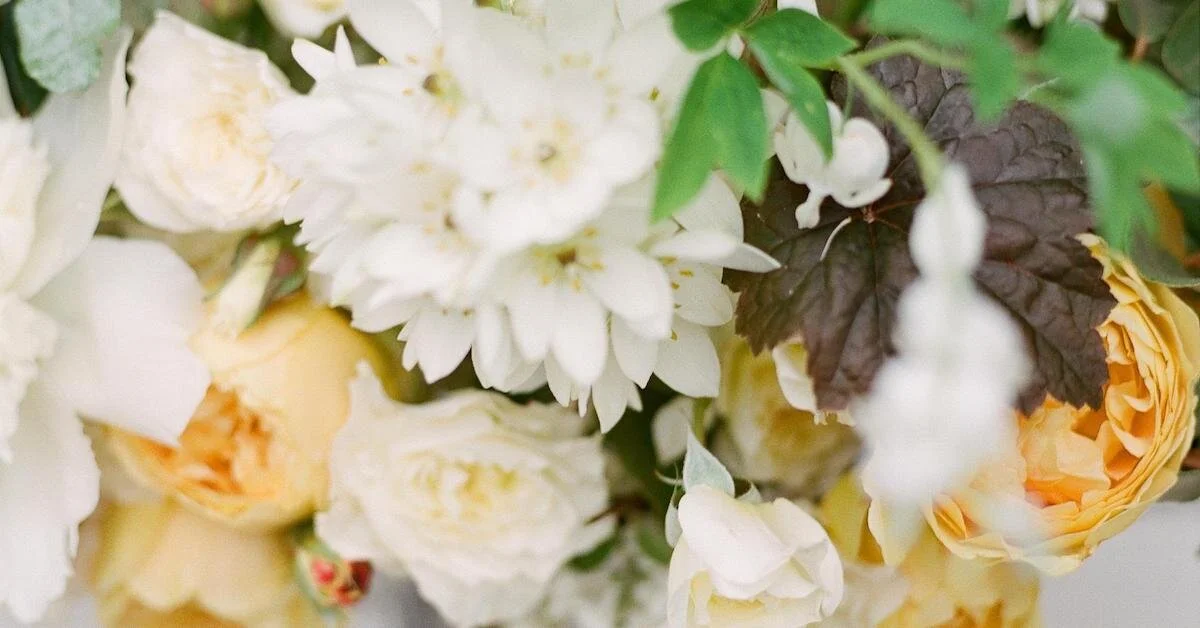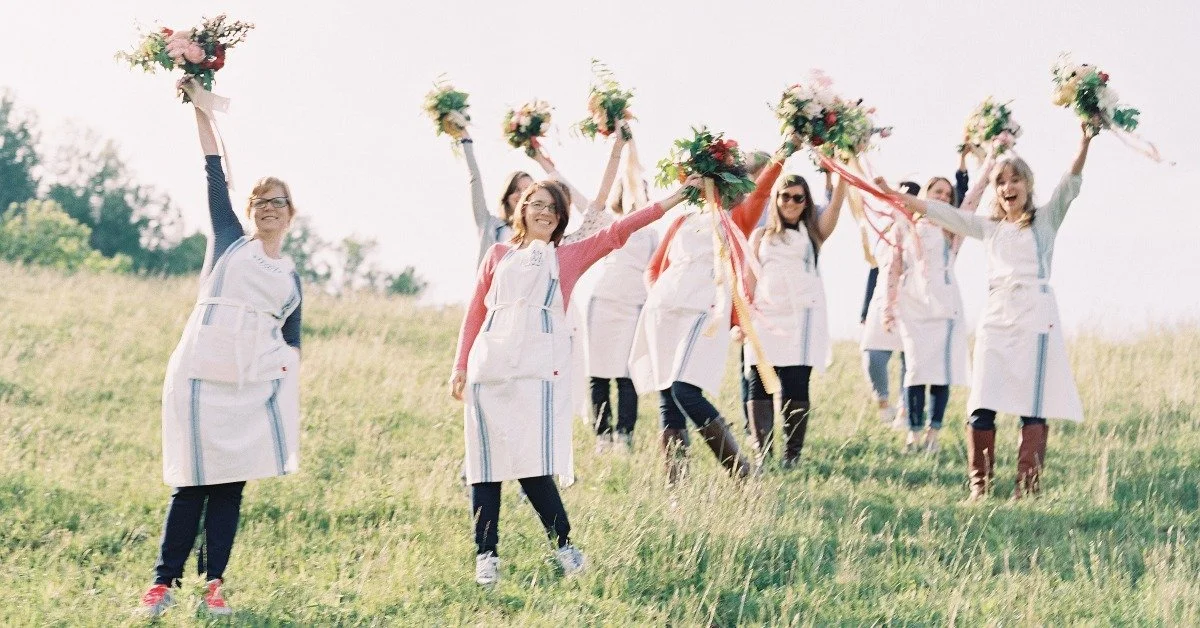How to Become a Large-Scale Flower Business
Our company, Sage Designs, produces over 200 events each year. The logistics of it are pretty straightforward; more events mean you need more people. All of the people involved must have very clearly defined roles so that no details are missed. It’s really as simple and obvious as that. The real trick is figuring out how to get from solopreneur to entrepreneur.
I am a firm believer that everything we create is first born in our minds; we make decisions which guide the outcome of our lives and our work based on the way we look at and think about these things.
In that vein, I believe that growing a business from 10 events a year that you can produce entirely on your own to 200+ events that you manage and produce with a team begins with a major mind-set shift. Once you start thinking about your business in a certain way, you will begin to make decisions which line up with that vision of your business.
This article will discuss both the mind-set shift that needs to take place as well as the decisions you’ll need to start making now to grow. If you intend to grow, then I hope you’ll find this article helpful.
MY STORY
I started in this industry as a wedding planner in 2007.
Here’s a photo of me at that very first wedding!
My very first client asked me to arrange and set up her flowers along with the rest of the decor. She would provide the flowers—hot pink gerberas—and I would arrange them. I wasn’t charging for this wedding because it was my first and I needed the experience. Naturally, I didn’t charge for arranging flowers either—how could I? I had no clue what I was doing!
Luckily, the bride had zero expectations, and she was pleased with everything. And so began my love affair with event design and my deep dislike for gerbera daisies. I’ve avoided working with them ever since!
Fast forward a couple of years, and suddenly I was doing flowers for more than half my planning clients. I managed to figure out how to set up an account with a local wholesaler, and I learned on the fly using YouTube videos and workshops. I practiced my skills using grocery store flowers and lots of trial and error.
I did everything from my kitchen table, which was manageable since my orders were relatively small at this point.
Setting up flowers and decor became a regular thing for me. I began purchasing vases, candle holders, and some key decor pieces. My garage started to fill up with random boxes and bins. I re-invested every penny I earned (and then some) into flowers and decor.
As the decor installations became more elaborate, I would bring in one or two assistants to help manage the event (usually my sisters or my mom!). We ran ourselves ragged, but the clients were happy.
I did well with this system—I’m a great little worker bee so arriving at an event with a great big to-do list for myself and my team was great. I’d dive in and start working, and we’d keep working straight through until the very end of the event. Sometimes this meant crazy 20-hour workdays.
By early 2010 the combination of planning and decor had become too much, and I decided to cut out the planning services altogether. At least this way I could leave after the event was set up and rest for a bit. I rebranded as Sage Designs: a full-service decor and floral design firm. I was still working with a solopreneur mind-set at this point. I was still the worker bee buzzing around doing every job.
The worker bee is a brilliant solopreneur—very reliable and diligent!—but worker bees don’t grow big businesses.
WHEN IT ALL BECAME TOO MUCH
In 2014 I was forced to start looking at my business differently; I was tired and overextended. I began turning down business because I was already booked. I had more than enough decor to manage multiple events—but who would set it all up? I was still re-investing every penny, so I wasn’t making any money and I had no downtime. My garage was bursting at the seams, and it was madness trying to pack for events.
When Friday came along, I’d stay up until 3 a.m. arranging flowers, I’d nap three hours, and then take off at 6:30 a.m. Saturday morning to start my installation day. I’d leave my kitchen floor covered in leaves and stems because, with just three hours of sleep, I did only as much as I had to. My husband would tidy up after I’d left. (Thank goodness for him!)
I usually had two or three people meet me onsite to get everything set up. Once we finished, I’d drive an hour to get home, and I’d pass out for a few hours. Then I’d have to wake up at midnight to drive an hour back to the venue and clear everything out at 1 a.m.
This is how many of my weekends unfolded. I did everything myself because I believed that I had to. If there had been more hours available for the installation, I probably would have fully installed everything myself too.
I had no idea how to pass anything off and trust that it would be done right, so I passed almost nothing off. My weekdays were packed with emails, phone calls, meetings, proposals, accounting, ordering, flower processing, and flower arranging. When event day came along, I did the packing, the cleaning, the loading, the unloading, the driving, the setup, and the finessing. I lit the candles, took the photos, and then I returned to clean everything up afterward.
Wash. Rinse. Repeat.
As exhausting as this may sound, I have a feeling that it’s a familiar story for many of you. Unfortunately, it’s not sustainable.
NECESSARY CHANGE
I knew I couldn’t keep it up. I was tired all the time, and I had started cutting corners. In trying to give my clients all of me, I was failing to provide them with the best of me. When clients complained because some small thing was missed or a mistake was made, I was devastated.
I would think to myself: Did they even understand how much work I’d done for their event? Did they have any clue how much time, money, and energy I’d invested into making everything as perfect as possible? Did they care that I hadn’t made a cent at the end of the day because every penny had to be used to cover my costs and overhead?
No, they didn’t care. They were upset because one of the flowers was the wrong shade of pink, because we used a clear vase instead of a gold vase, because a linen had a spot, or because grandma’s corsage fell apart before the ceremony, etc.
They were often ruthless, but they were also right. And I knew it.
I knew I couldn’t go on this way, but I also had no money to hire staff. Plus, I felt that no one would want to do any of the “crappy” jobs, right? I mean, who wants to wake up in the middle of the night to clear out my events? Who wants to come in just to process my flowers but not do the “fun part” of actually arranging them? Who wants to clean vases or pack up boxes for me? Even when I had staff onsite, I’d keep all the “hard” jobs for myself so that my crew could do the easy stuff where possible. I didn’t want to put anyone out for me, for my business, or my clients.
One night, when my alarm went off at midnight, I broke down and started sobbing. I couldn’t drag myself out of bed to clear out the event. I barely managed to pull myself together that night. I knew things needed to change or I was going to have to throw in the towel on this whole venture.
I started thinking about how I wanted Sage to look five years, ten years, 20 years down the road. Was I still running myself ragged? Was I still doing every job?
Definitely not.
When I pictured the future Sage, I imagined a real team where everyone had a role. I started daydreaming about what those roles might be.
I would have a warehouse manager who took care of all the inventory, packing, and cleaning.
I’d have a production manager who would take care of all the staff and logistics for our installations.
I’d have a dedicated installation crew who would set up our events.
I would have a creative director who would work with the clients to plan their perfect design.
I’d have a floral designer who would process and arrange all of the flowers.
I’d even have a marketing director who would manage all of our marketing and social media accounts!
Hey! Maybe each of these people would even have their own teams!
I went so far as to create an organizational chart for the business, and I started building job descriptions for all of these different roles with me at the top of the chart as CEO overseeing the whole operation. Suddenly, Sage Designs was a 20+ person enterprise full of happy, energetic people who loved producing events and who genuinely loved working with each other. We were a brilliant business, and we created the most stunning events without anyone having to run themselves ragged.
At least, that’s how I saw it in my head. It was a lofty, idealistic, ambitious undertaking, but seeing my business in this way gave me a new burst of energy and a renewed sense of purpose. I dug my heels in, and I set to work.
My first order of business was to rent office space with a warehouse so that I could get out of my garage and off my kitchen table. I found a 2000-square foot place that I really couldn’t afford, but I negotiated a deal with the landlord based on a 5-year lease. It was the perfect place and, while I had massive anxiety about signing the paperwork and locking myself in long-term, I knew it was a necessary step if I was going to get Sage to the point where I’d have a marketing director.
Next, I started outsourcing whatever I could. It took a little while for me to figure out what things should be outsourced and what things really shouldn’t be. There was a lot of trial and error, and I lost some business during the “error” portions. For example, I had someone else answering phones and emails for me when I hadn’t put the proper systems in place for those jobs yet.
Again, I found myself fighting against the voice in my head that told me no one wanted to do the “crappy jobs.” I needed to realize that all of the jobs were important. I was willing to do every position, and if no job was beneath me, then no job was beneath anyone else. Every single task contributed to the success of our events, and I needed to hire people who understood that.
So, I started smaller. I had people come in to help with processing flowers while I answered emails. I had people come in to help with loading and unloading vehicles while I had client meetings. I trained staff to produce events WITHOUT ME (gasp) so that I could hand off smaller gigs to a reliable crew while I created a larger one elsewhere. I no longer had to turn down that dream gig because I already had an event that day.
Slowly we started doing more events, and gradually the business began to make a little bit of money.
MAKING THE MIND-SET SHIFT
So how can you get started in building a business that can produce 200+ events a year? It begins with a shift in your mind-set. Once you change the way you think about your business and, perhaps more importantly, the way you think about YOUR ROLE in the business, the decisions you make for your business will change.
When you run your business as a solopreneur, there are a few downsides to consider:
It’s all on you.
A company without employees is just a complicated job you’ve created for yourself. When everything relies on your ability to work, it means that when you’re not working, you’re not making money. This makes vacation and retirement planning a big challenge.
Your time is limited.
It’s tough to do everything sustainably. As long as you’re doing every job, your business will never be able to expand beyond the limits of your own time and talents. The only option is to stretch yourself thin trying to do everything, and it’s tough to do our best work when we’re feeling stretched. In time, your clients will notice.
You’re not good at everything.
Let’s face it, you’re not the best person for every job. You may be really great at arranging flowers but pretty bad at accounting, cleaning, marketing, or taking photos. In the beginning, we do all of these jobs out of necessity, but as you grow, you need to outsource as much of these tasks as possible. The fact is, other people can do it better, faster, and often they can even do it cheaper than you. Find people who are better than you and hire them.
DIFFERENCES BETWEEN SOLOPRENEUR VS. ENTREPRENEUR
The distinction between a solopreneur and an entrepreneur is subtle, but it’s crucial. It all comes down to how you view your business now and in the future. Ultimately, your business philosophy, whether solopreneurial or entrepreneurial will massively influence your day-to-day decisions which will shape the future of your business.
Here are three critical differences between solopreneurs and entrepreneurs:
INTENTION
Solopreneurs start their businesses with the intention of doing everything themselves and with no interest in hiring or managing employees now or in the future. Entrepreneurs, even those who currently work alone, are building their businesses with the intention of hiring and managing a team at some point.
WORKFLOW
Solopreneurs are worker bees, and their first instinct is to jump in and start working. They generally have a hard time letting go and delegating tasks. Entrepreneurs prefer to create systems so that they can delegate day-to-day tasks which free them up to focus on growing their business.
EXIT STRATEGY
Solopreneurs generally expect that their business will cease to exist when they stop working. Entrepreneurs have a plan for how their business might continue to live after they no longer work there. They may plan to sell their business or retire out of it and have someone else run it for them.
HOW TO GET FROM SOLOPRENEUR TO ENTREPRENEUR
As I mentioned earlier, going from solopreneur to entrepreneur has less to do with how many employees you have and more to do with how you plan and organize your business. You may be an entrepreneur who currently works alone or a solopreneur who intends to do everything themselves forever.
If you’re a solopreneur who’s ready to start thinking like an entrepreneur, here are a few things you can do to start shifting your mind-set.
THOUGHT EXPERIMENTS
Try thinking differently about your business. Imagine what your business might look like if you didn’t work there. Be extreme and consider how your company would be organized if you produced 2500 events a year. You absolutely could not do everything. How would it function? Who would manage the day-to-day tasks? What would your organizational chart look like? How many employees would you have and what would their responsibilities be?
SYSTEMS
Put systems in place for everything you do. I recommend reading the book EMyth to help with this step. It may seem like a big waste of time to do this before having any employees; who has time for that nonsense? But trust me, it’s important. Creating clear systems now allows you to identify holes in your workflow and establishes a consistent standard of work. Having the kinks worked out before you start hiring staff makes it easier to train employees down the road.
HIRE NOW
You may be thinking that you need to wait until you can afford to pay someone full-time before you can start hiring staff. That’s not the case at all. Start now by hiring people to take on specific tasks on a part-time or casual basis. This will help you practice managing employees, and it will force you to start letting go of your need to do everything. Look at your business and identify tasks that you could comfortably pass off to someone else. Here’s a quick list of jobs you could probably outsource now:
Hire a bookkeeper and/or an accountant to manage your finances.
Hire a virtual assistant to answer emails, book your meetings, or call venues and clients to confirm and finalize logistics.
Hire cleaners to do a weekly or monthly deep clean of your workspace.
Hire freelance floral designers to help with flower arrangements.
Hire casual staff to receive/process floral orders, organize your recipes, and clean/pack inventory.
Hire a photographer to shoot your best work.
Hire a website manager to update your galleries and keep your site looking fresh.
Bring in a co-op student from a marketing program to help manage your social media accounts.
Hire a delivery driver to help get your stuff where it needs to go.
CONCLUSION
It was a long and challenging road trying to shift my mind-set from worker bee to entrepreneur, and I still have some work to do (as my team would gladly tell you), but I’m well on my way.
Today, we produce over 200 events a year, and I work primarily as Creative Director dealing with clients and sales. I have a production manager who calls the venues, hires our summer contract staff, sets up our rental orders, and creates our installation schedules each weekend. I have a warehouse manager who is responsible for all of our inventory and takes care of cleaning, packing, and loading everything for our events ensuring that nothing is missed. I also have a freelance floral designer who comes in to help arrange flowers. This year she’ll be doing the bulk of the floral work while I continue to focus on our clients.
I still don’t have a marketing director, so I do most of the marketing and social media myself, but we’re only five years into this 20+ year plan of mine, so there’s still a lot of room for growth.
Sage Designs is thriving, and my stress levels are way down. We’re producing gorgeous events while providing our clients with top-notch customer service. I’ve even freed myself up enough to start working on a side-project that I’ve wanted to start for years; it’s a little blog called Event Creatives where I share things that I’ve learned over the years in the hopes that it might help others grow beautiful, sustainable businesses.
I hope you’ve found this article helpful. I’d love to hear your thoughts and I’m always happy to chat should you want to connect and pick my brain!

